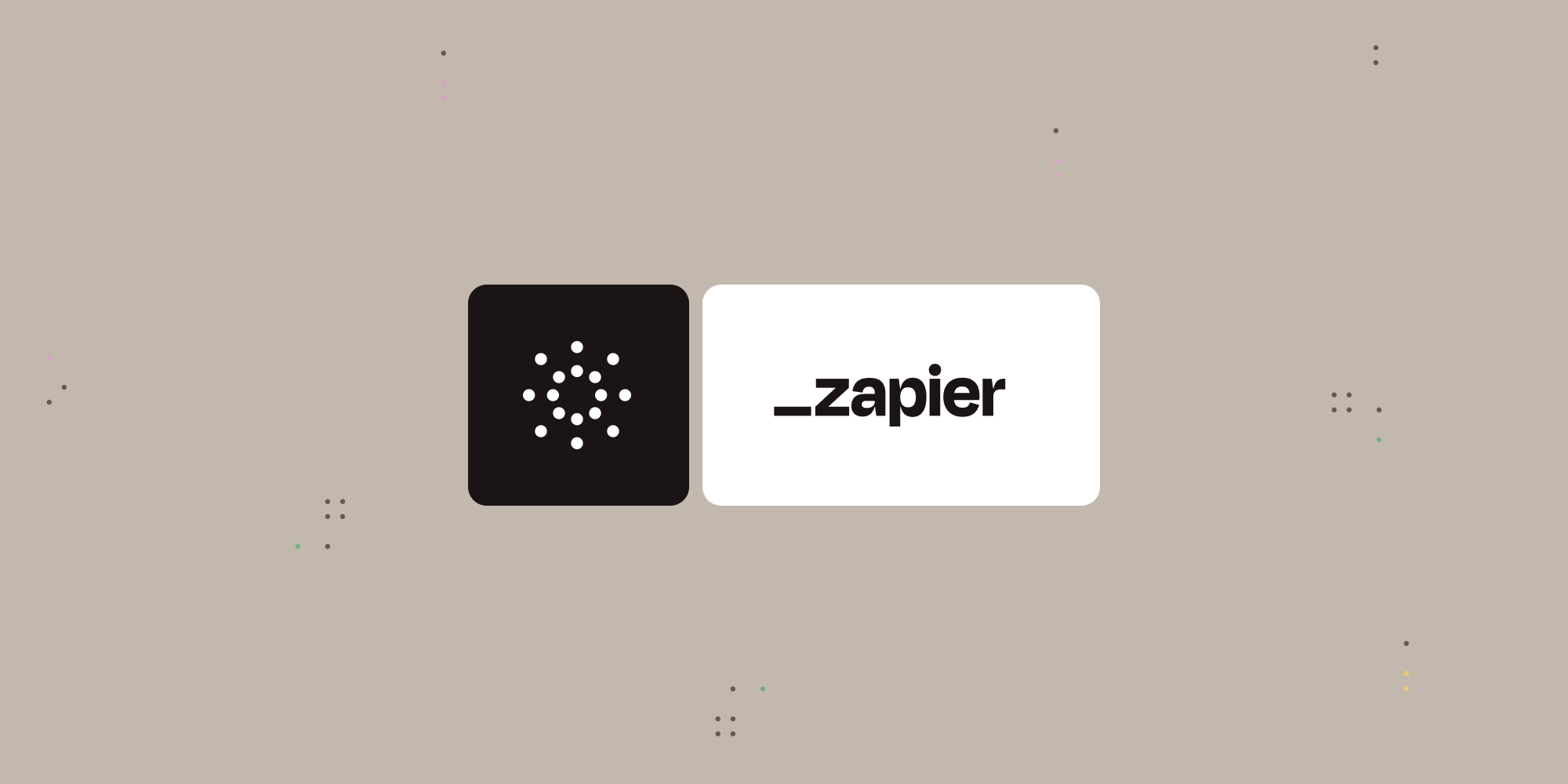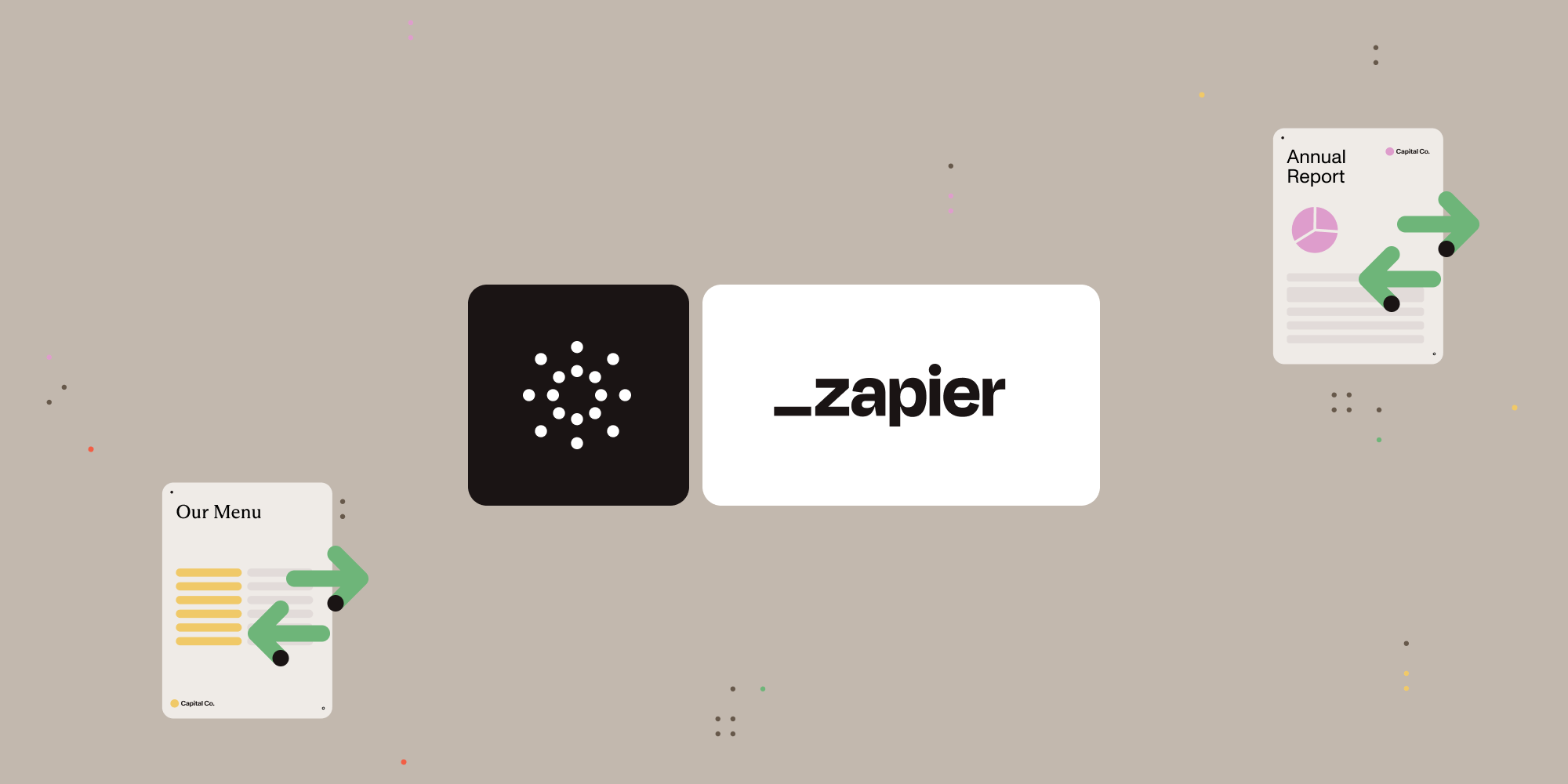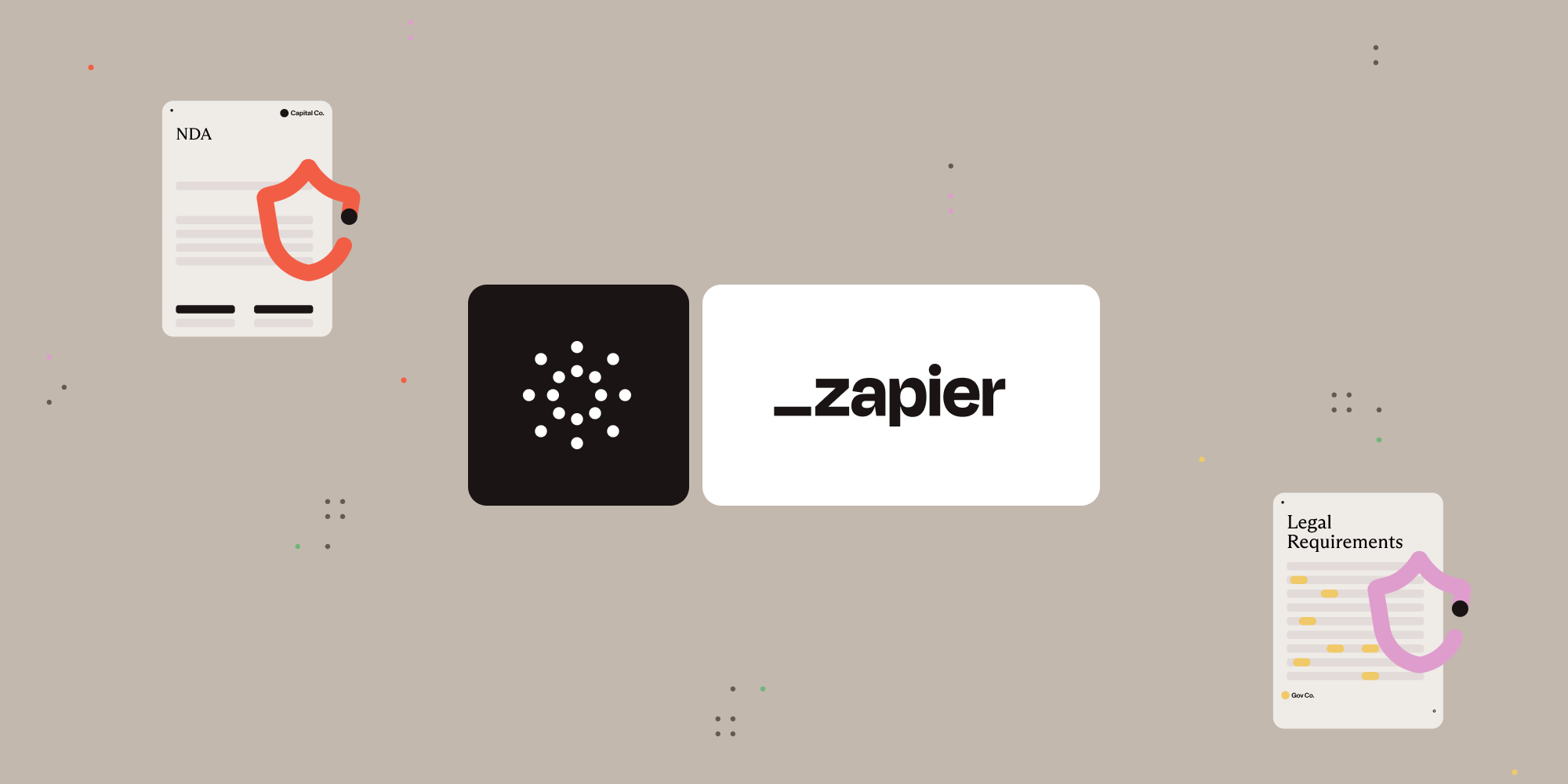Add annotations to PDFs with Nutrient Document Web Services API on Zapier
This tutorial shows you how to automatically annotate PDF files using the Nutrient Document Web Services API on Zapier. You’ll trigger the workflow when a new PDF is uploaded to a Google Drive folder, find a matching JSON file containing annotation data, and apply the annotations using Nutrient.
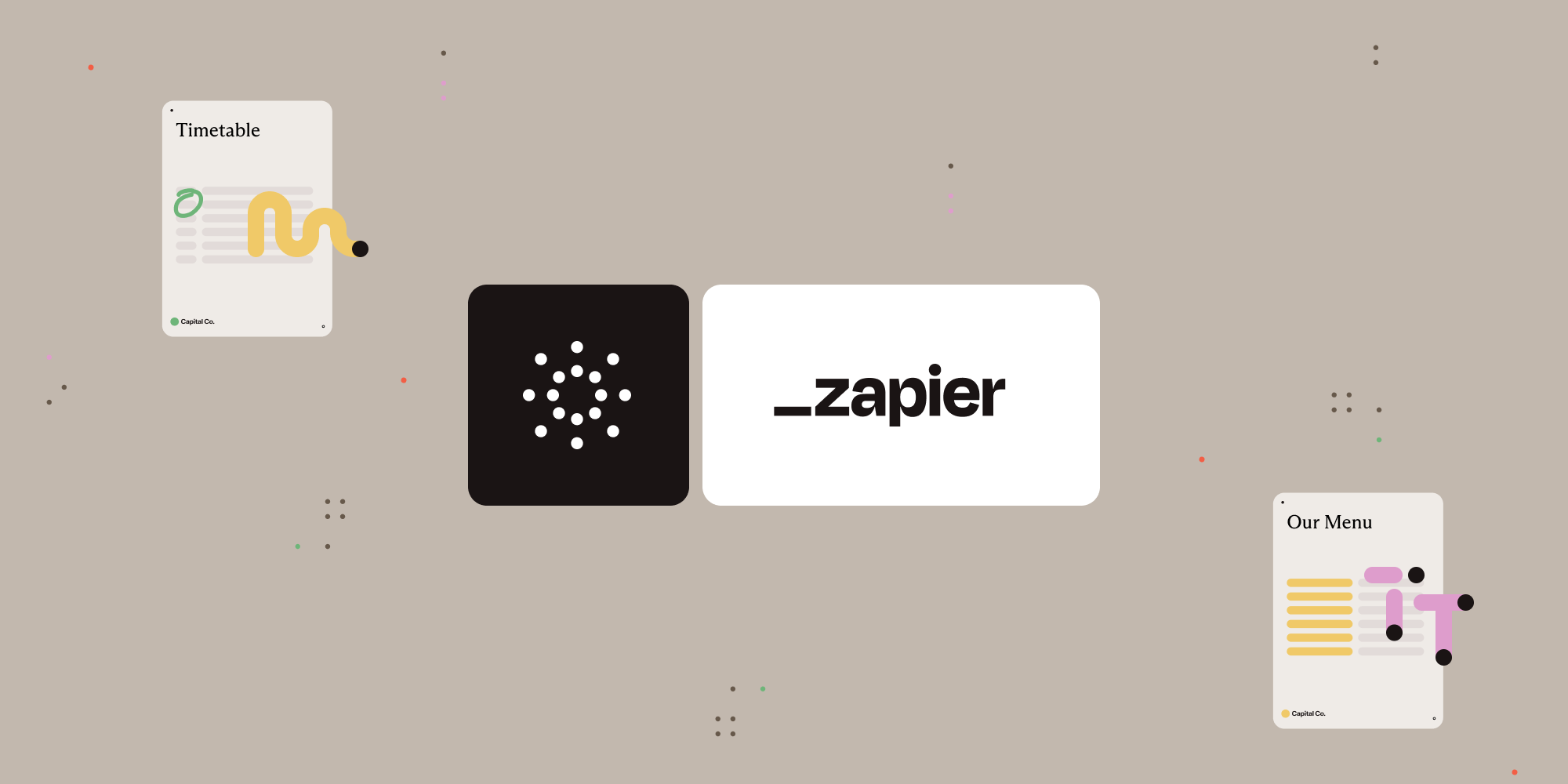
What is Zapier?
Zapier is an automation platform that connects your favorite apps and services with no code required. You can build “Zaps” to automate repetitive tasks by setting up triggers and actions between apps like Google Drive, Slack, Gmail, and more.
In this tutorial, you’ll learn how to use Zapier to automatically annotate PDF files using the Nutrient API.
What is the Nutrient API?
Nutrient Document Web Services API is a powerful platform for document automation. With your free account, you get 100 credits, which you can use to perform various document operations. Each tool (e.g. conversion, signing, flattening) consumes a different amount of credits depending on complexity.
Nutrient offers more than 30 tools with the ability to:
-
Convert images and documents to PDF
-
Merge, split, or reorder pages
-
Add digital signatures, watermarks, or annotations
-
Run OCR, redact, flatten, and more
All you need is an API key from a free account to get started. You can chain these tools together in Zapier to build powerful, automated PDF workflows.
What you’ll need
-
A Zapier account (a pro plan is necessary for multi-step Zaps)
-
A Google Drive account
-
A PDF file uploaded to a Google Drive folder
-
A JSON file with annotation instructions uploaded to a Google Drive folder (publicly shareable or findable)
-
A Nutrient Document Web Services API key — sign up here
Step 1 — Trigger a new file in a Google Drive folder
-
Select Google Drive as the trigger app.
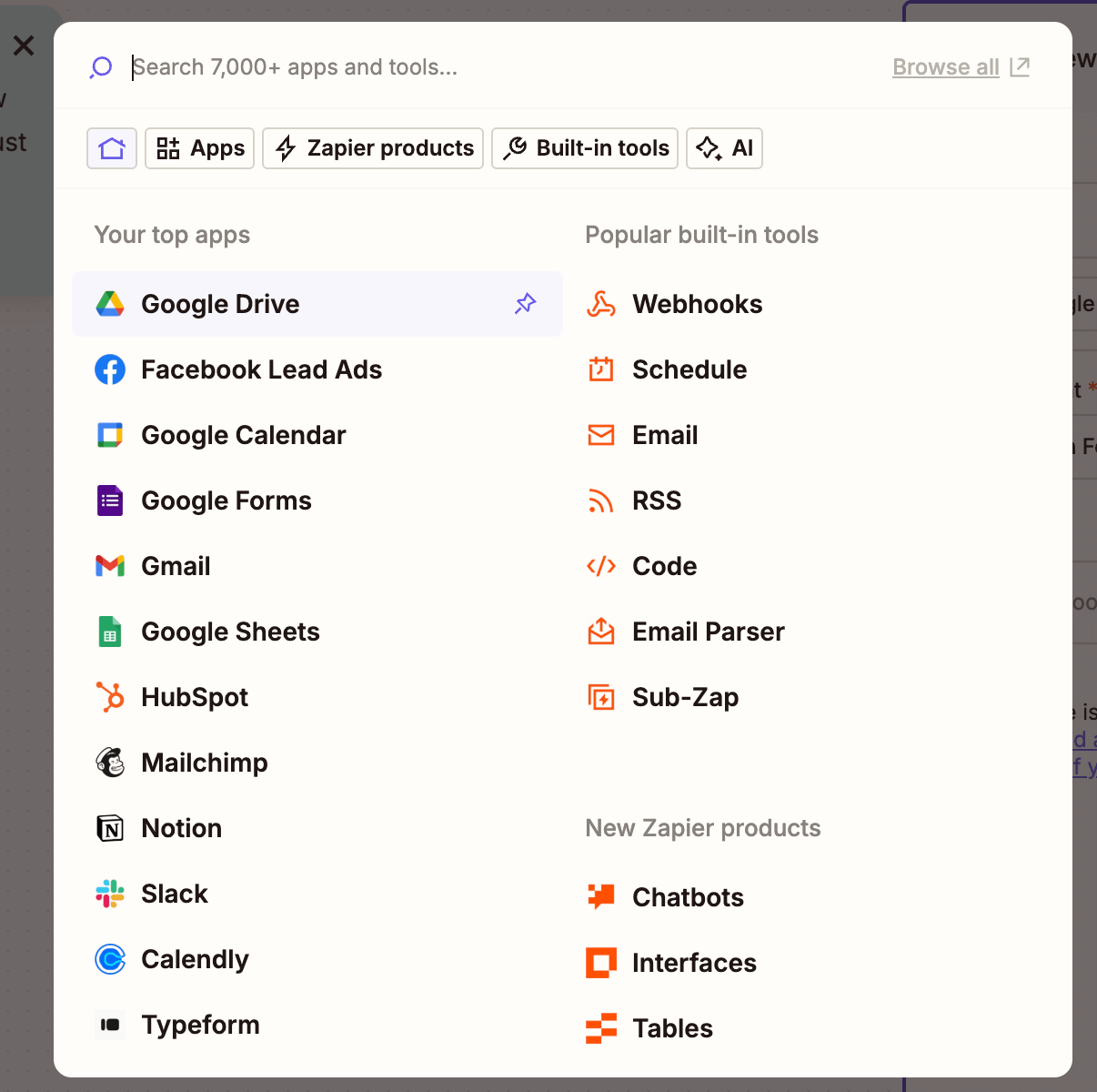
-
Choose the New File in Folder trigger event.
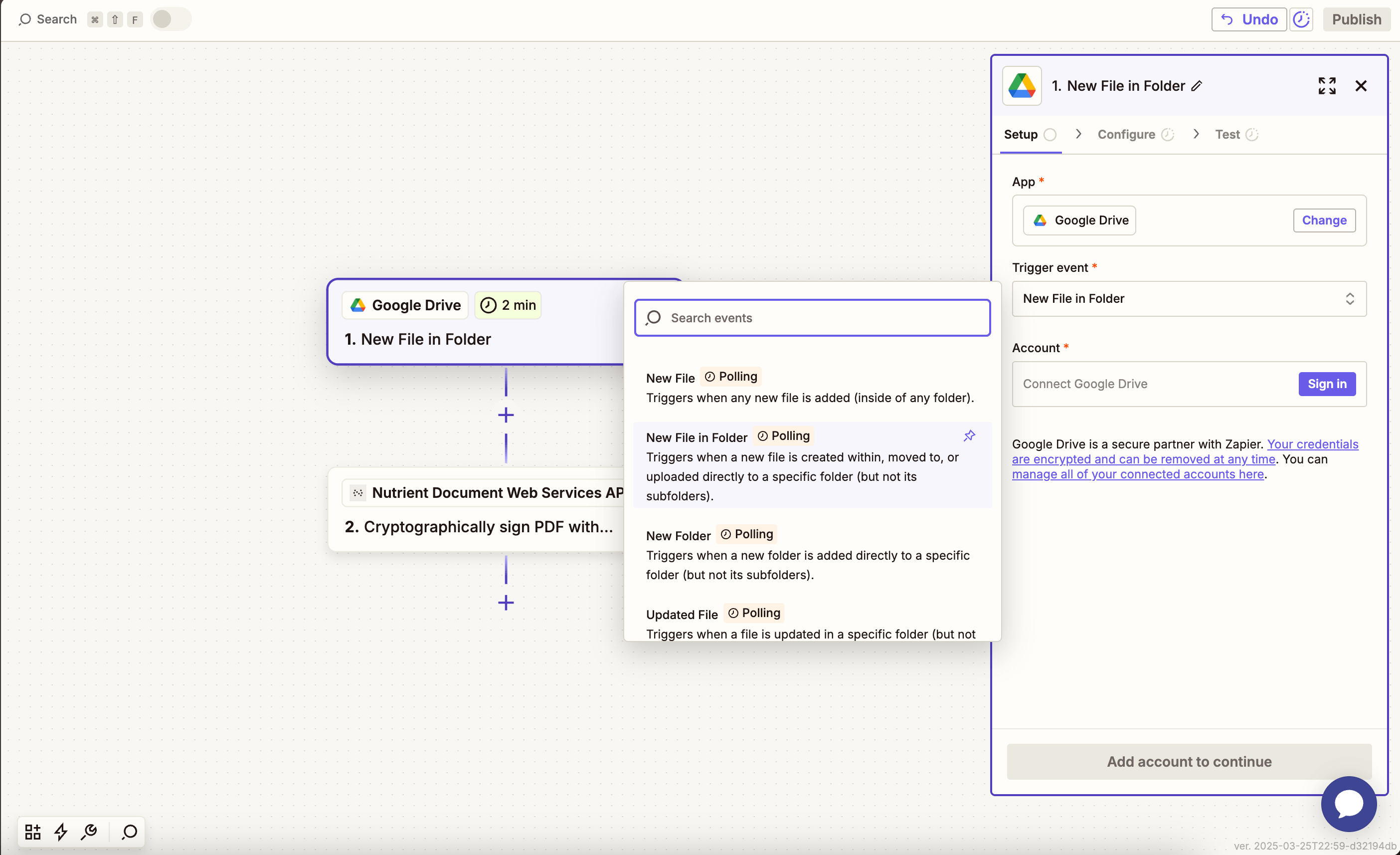
-
Connect your Google Drive account.
-
Configure the trigger:
-
In the Drive field, select your Google Drive.
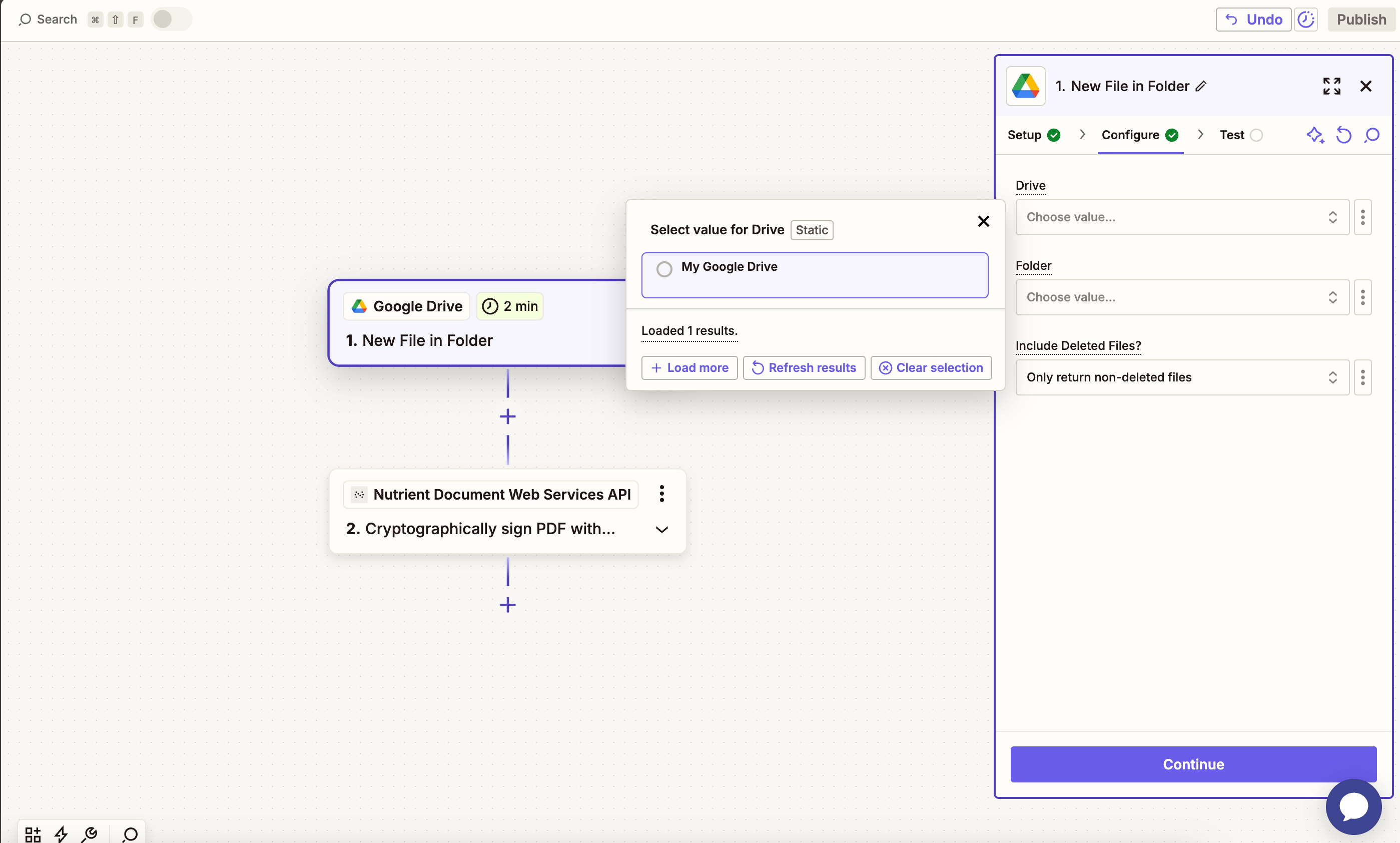
-
In the Folder field, select or create a folder (e.g.
nutrient).

-
Ensure that the option for Include Deleted Files? is set to Only return non-deleted files.
-
Once configured, test the trigger by selecting a sample PDF file from the folder to confirm it’s being pulled into the Zap correctly.
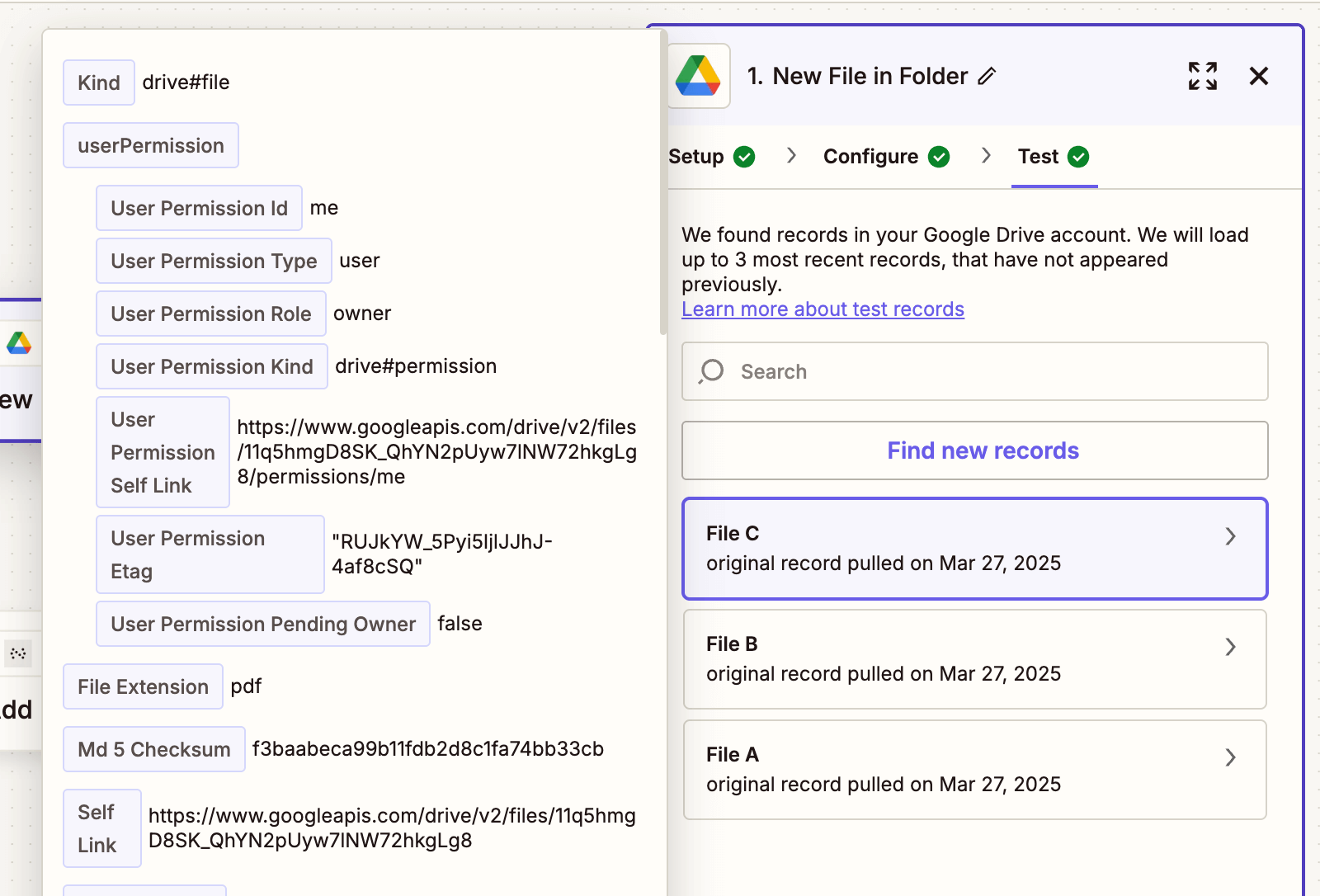
Step 2 — Find a matching JSON annotation file
-
Add a new step by going to Google Drive > Find a File.

-
In the configuration, select the following:
-
Filename — Type the expected name of your annotation JSON file (e.g.
annotations.json). -
Search Type — Set to Filename contains.
-
Drive — Select My Drive.

Make sure your JSON file sharing access is set to Anyone with the link in Google Drive so that Zapier can access it.
-
The output should include a web content link or direct file URL — you’ll use this in the next step to apply annotations.

Step 3 — Add annotations to PDF action (Nutrient API)
-
Next, select Nutrient Document Web Services API as the app.
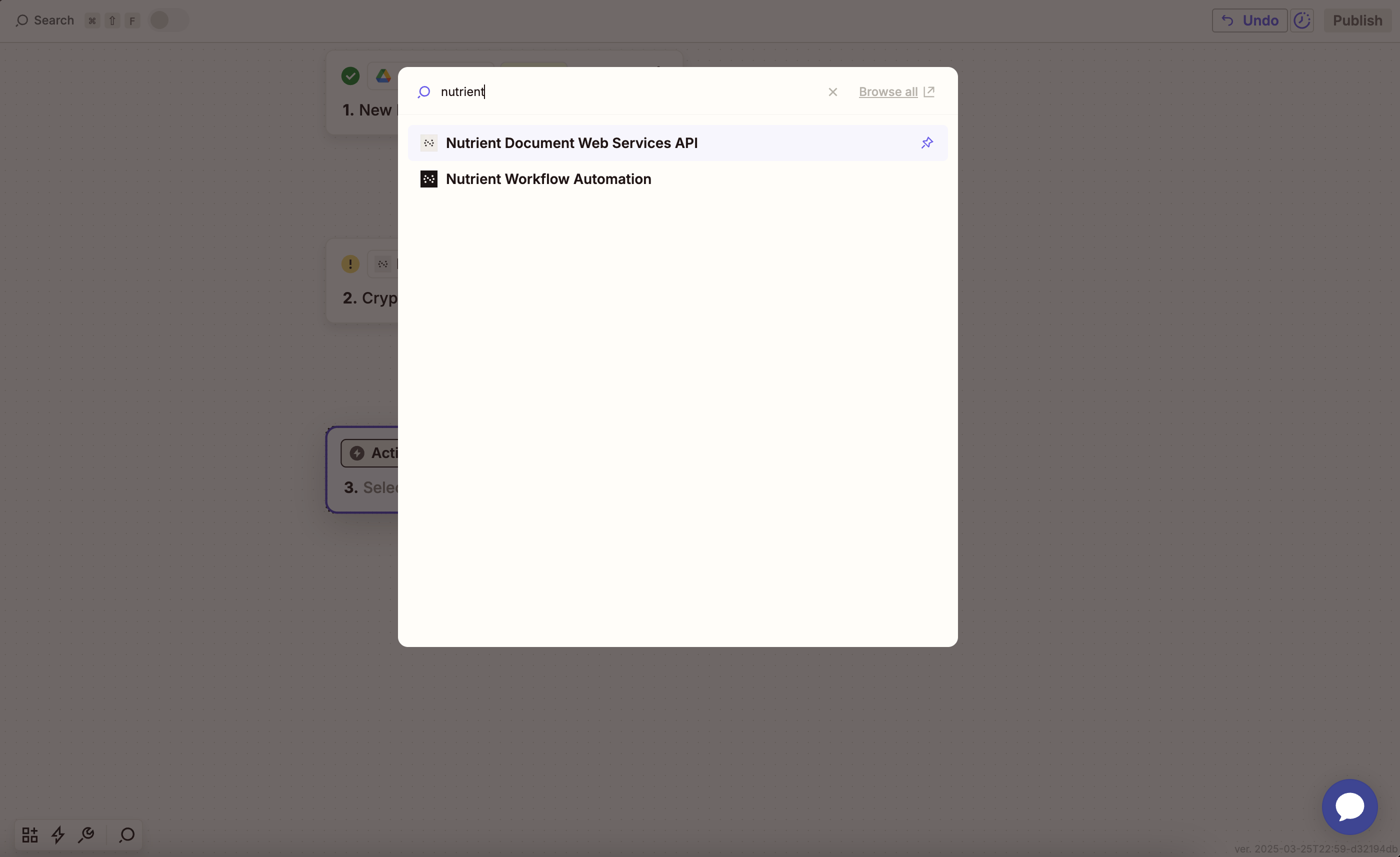
-
Choose the Add Annotations to PDF action.

-
Connect your Nutrient API account with your API key.
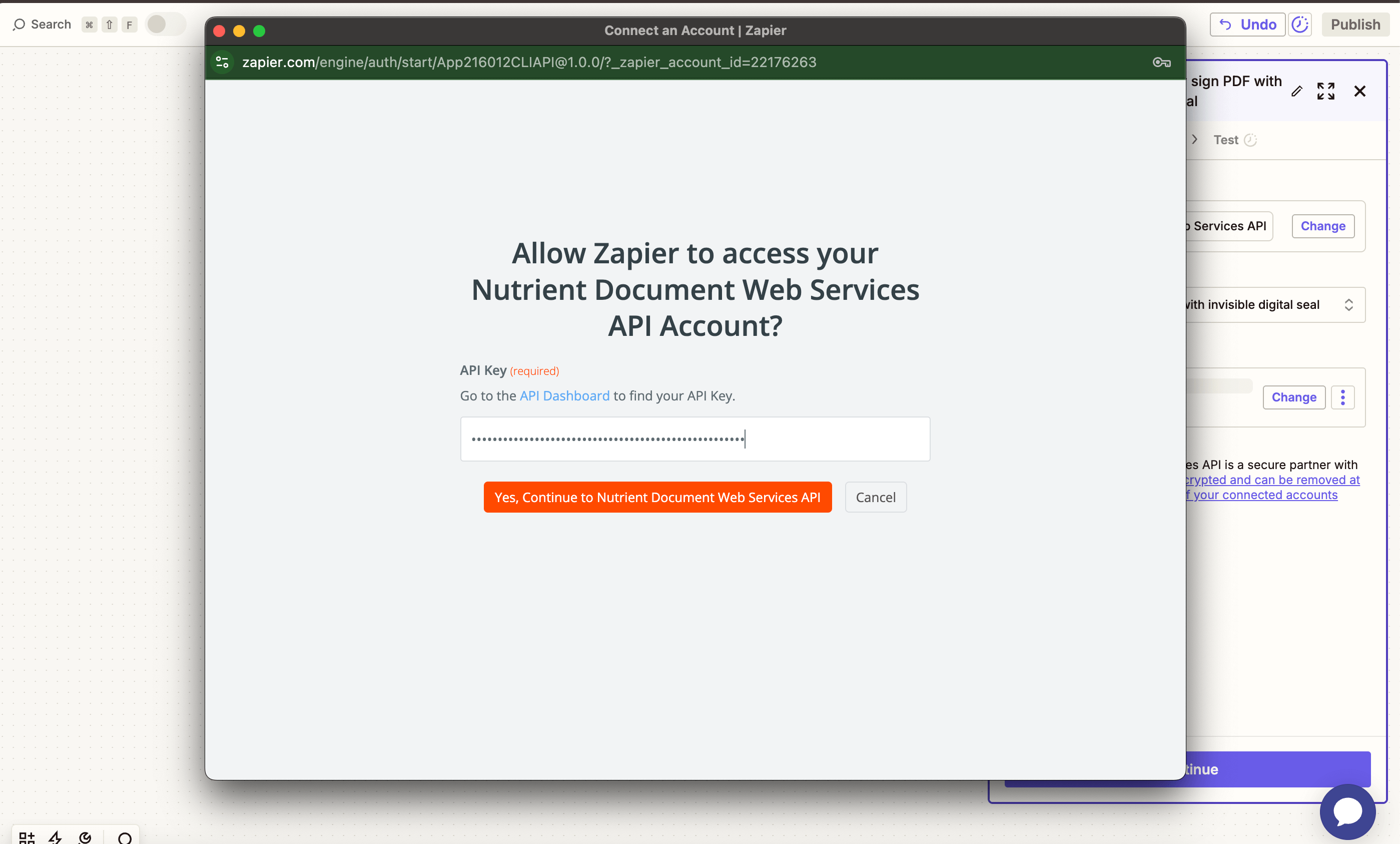
You can find your API key in the Nutrient dashboard.
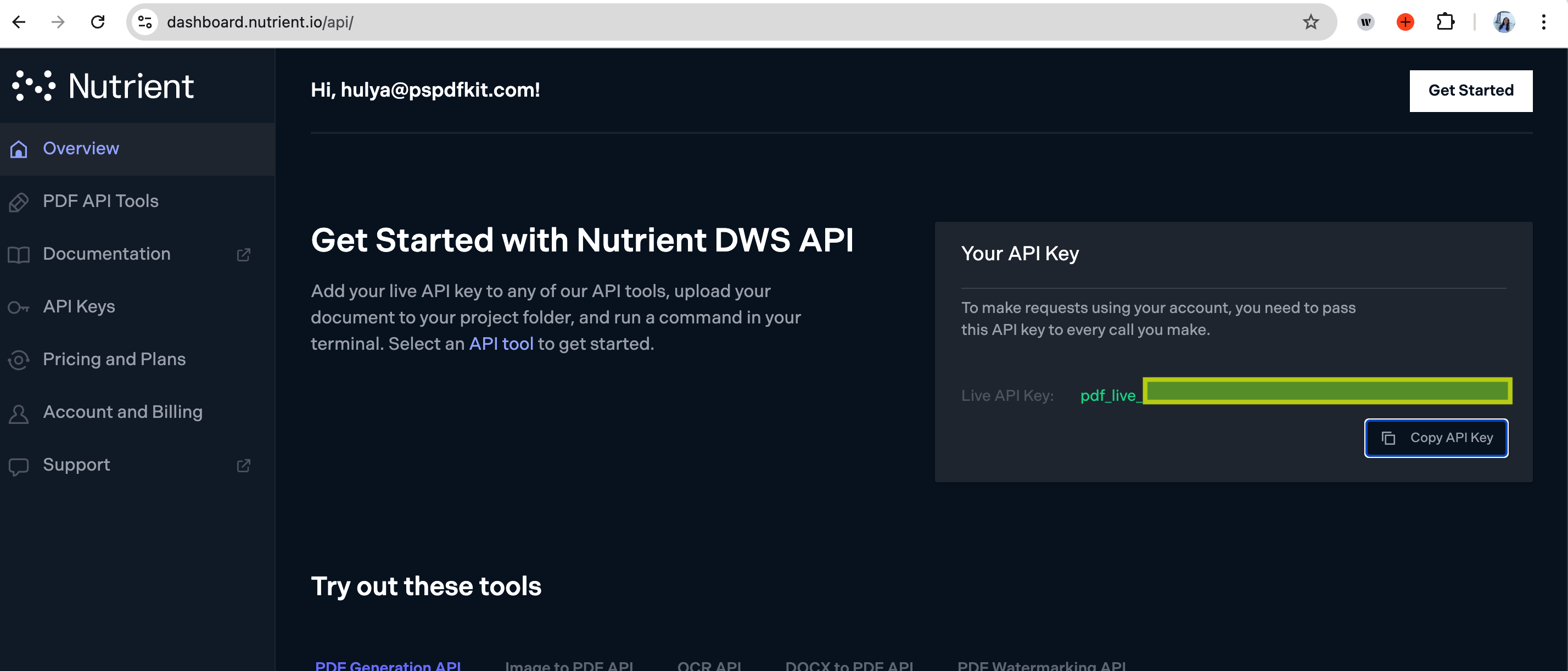
-
Fill out the action fields:
-
PDF File URL — From step 1 (the PDF trigger).
-

-
Annotations JSON URL — From step 2 (the find file step).

-
Output File Name — Optional (e.g.
annotated_file.pdf).
The file must be accessible via a public URL or direct download link (Zapier will handle this if sourced from Google Drive).
-
Test the step to verify that the annotations are successfully applied. You can use our sample document (
annotations.pdf) and sample Instant JSON file (annotations.json) for testing this step.

Step 4 — Upload the annotated PDF to Google Drive
-
Now, add another step by selecting Google Drive as the app and Upload File as the action event. Connect your Google Drive account if needed.
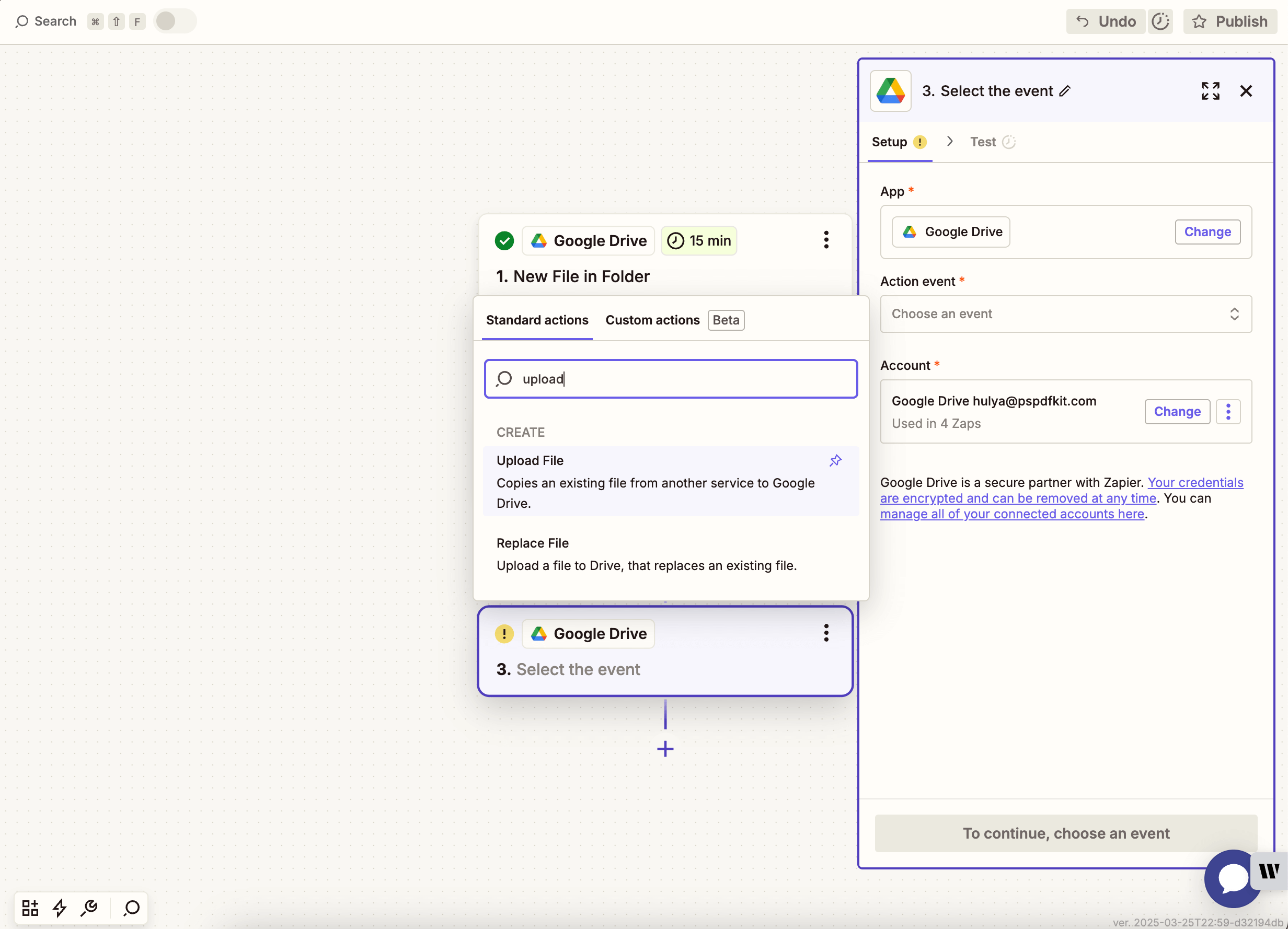
-
Select your drive and the folder where the updated PDF should be saved. In the File field, use the output from the Nutrient API step. Optionally, set a custom file name or extension to keep things consistent and organized.

Zapier may warn you about a potential Zap loop if you use the same folder for the input and the output. You can avoid this by uploading the updated file to a different folder.
-
Test the entire Zap to ensure the PDF is annotated correctly and the final file appears in the target folder. Once everything is working, click Publish to automate the workflow.
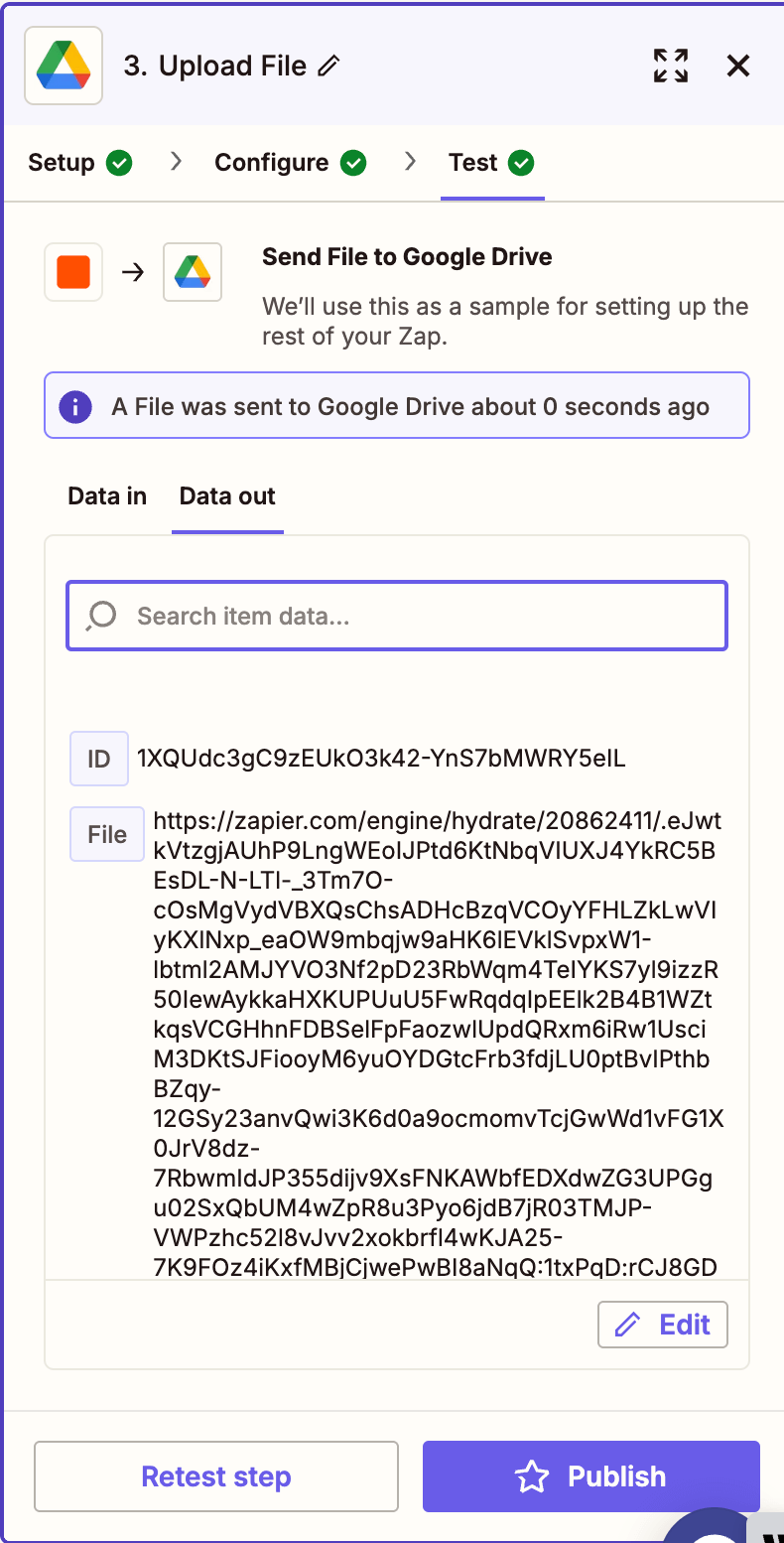
Conclusion
With this Zap, you’ve automated the process of applying annotations to PDFs using a structured JSON file and the Nutrient API. This is ideal for review workflows, programmatic markup, or scaling document collaboration without manual work. You can build on this flow by chaining it with other tools like redaction, signing, or form filling.


